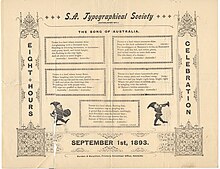
Gawler is the oldest country town on the Australian mainland in the state of South Australia. It was named after the second Governor of the colony of South Australia, George Gawler. It is about 40–44 km (25–27 mi) north of the state capital, Adelaide, and is close to the major wine producing district of the Barossa Valley. Topographically, Gawler lies at the confluence of two tributaries of the Gawler River, the North and South Para rivers, where they emerge from a range of low hills.
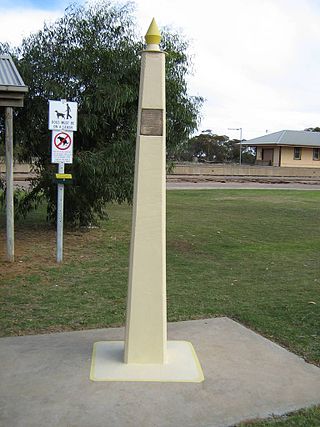
The Karoonda meteorite is a meteorite that fell to earth on 25 November 1930 at 10:53 pm near the South Australian town of Karoonda. It is of a rare composition, being carbonaceous chondrite, and is also rare in that it was found so soon after its landing. Several fragments are now held in the South Australian Museum in Adelaide.
The Register, originally the South Australian Gazette and Colonial Register, and later South Australian Register, was South Australia's first newspaper. It was first published in London in June 1836, moved to Adelaide in 1837, and folded into The Advertiser almost a century later in February 1931.
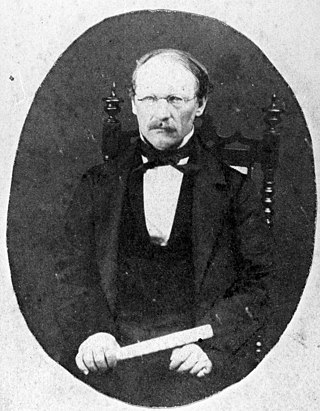
Carl Linger was a German Australian composer in South Australia who in 1859 wrote the melody for the patriotic "Song of Australia".
Peacock & Son was a tanning and wool-brokering business in the early days of South Australia. Three members of the family were notable public figures: William Peacock was a successful businessman and one of the colony's first parliamentarians. His eldest son Joseph Peacock carried on the family business and was a member of parliament. His youngest son Caleb Peacock was a member of parliament and Mayor of Adelaide from 1875 to 1877, the first such born in the Colony.

The Royal Agricultural and Horticultural Society of South Australia was founded in November 1839 as the South Australian Agricultural Society with the aim of promoting primary industries in the Colony. The Society and its functions were patterned on similar organisations in England, and in its successive incarnations, the organisation has continued to pursue this aim to the current day.

Caroline Carleton was an English-born South Australian poet who is best known for her prize-winning poem Song of Australia, which, put to a tune by Carl Linger was used as a patriotic song in South Australian schools and elsewhere, and one of four in a national plebiscite to select a National Song in 1977.
William Hanson MICE was a government engineer in the early days of the colony of South Australia.
John Murray and his son also named John Murray (1841–1908) were breeders of merino sheep in South Australia.

The Bunyip is a weekly newspaper, first printed on 5 September 1863, and originally published and printed in Gawler, South Australia. Its distribution area includes the Gawler, Barossa, Light, Playford, and Adelaide Plains areas. Along with The Murray Pioneer, The River News, and The Loxton News,The Bunyip was now owned by the Taylor Group of Newspapers and printed in Renmark.
G. & R. Wills & Co. Ltd. was a major softgoods wholesaler in South Australia. George Wills & Co., a wholly owned subsidiary, was a shipping agent also based in Adelaide.
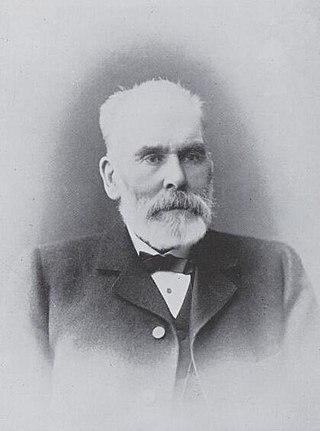
James Martin was an industrialist and politician in the early days of the Colony of South Australia.

The 1890 South Australian Football Association season was the 14th season of the top-level Australian rules football competition in South Australia.
George Whinnen was a South Australian painter.

Pilgrim Uniting Church is a Uniting church located on Flinders Street, Adelaide in South Australia.
George Hall Esq. was a British administrator in the 19th century.
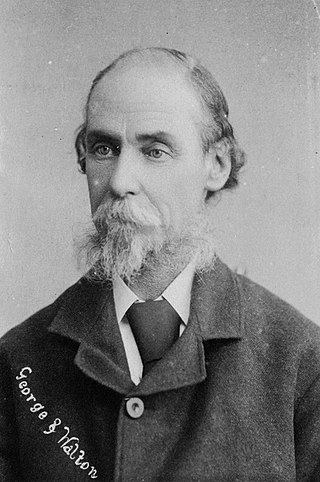
George Ettienne Loyau was an English-born traveller, poet and historian in Australia, best known as the author and editor of Notable South Australians.
William Bowen Chinner was a South Australian organist, choirmaster, teacher and composer.
Norman Chinner LRSM OBE was a South Australian organist and choirmaster.
Brenton James Langbein, AO was an Australian violinist, conductor, and composer.

